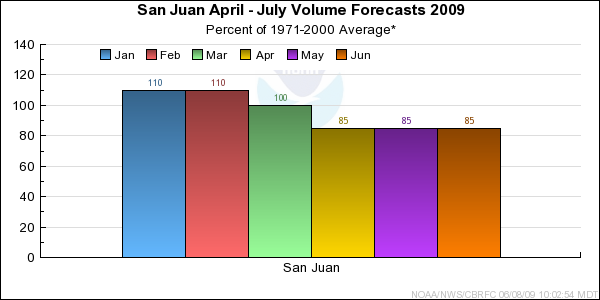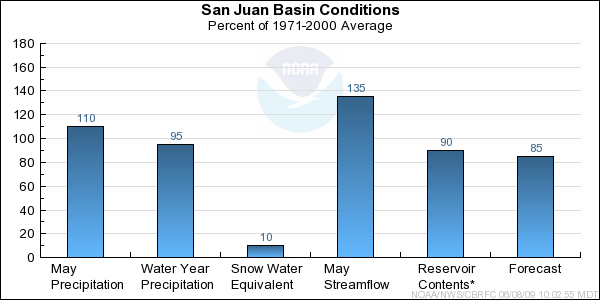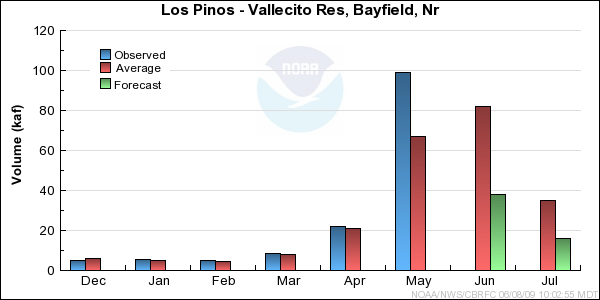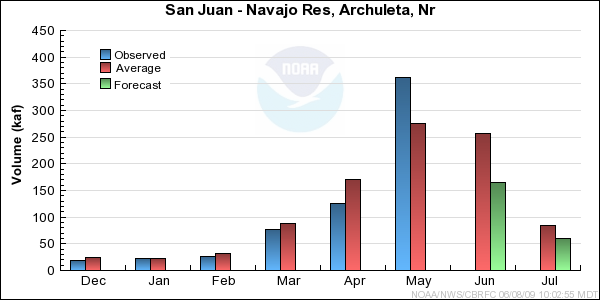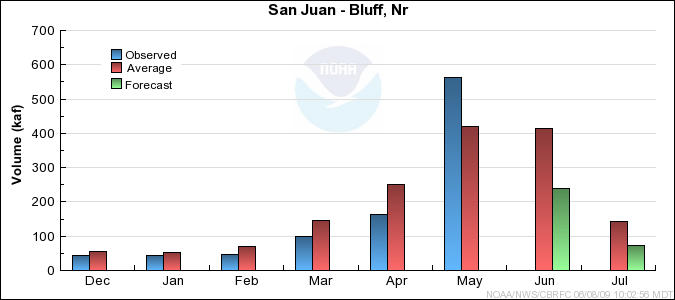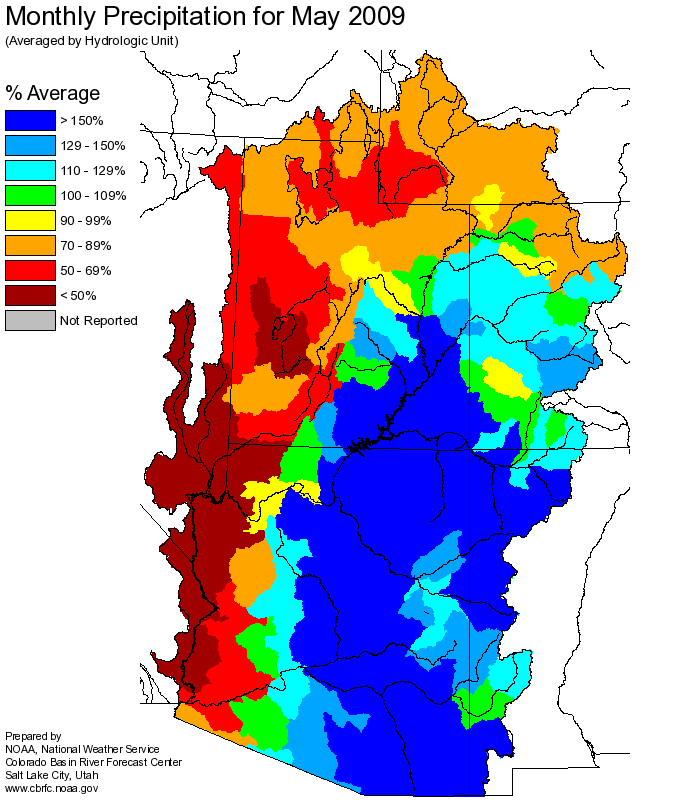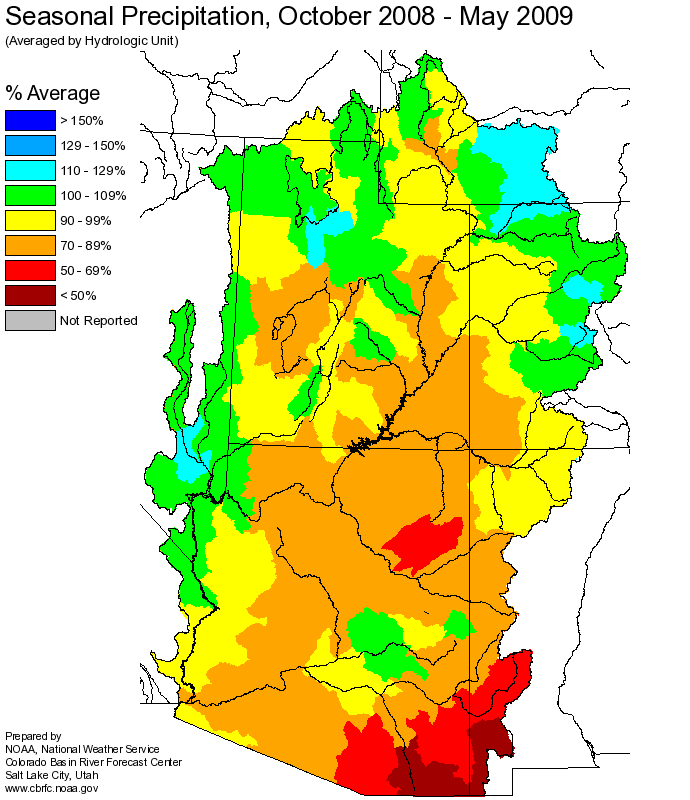-Model Soil Moisture/Observed Streamflow...
Soil moisture
for most of the upper basins in the San Juan were below average last fall. This was most likely due
to limited monsoonal precipitation over the summer months. Observed streamflow for the month of May
was much above average for most portions of the San Juan Basin due to much above average temperatures during the first 7
to 14 days of May.
-Snowpack/Precipitation...
Snow water equivalent
for the entire San Juan Basin on June 1st was 10 percent of average with the remaining snow well above 11,000 feet.
The upper San Juan Basin recieved near to above average precipitation during May, while the lower portions recieved much above normal
amounts. This was due to an approximate week long convective outbreak that had similarities to the monsoon. This wet period in May,
combined with the extremely wet December, has kept seasonal precipitation to 95 percent of average for the entire Basin.
-Short Term Precipitation Forecast... As of June 8th, meteorological models were predicting increased
chances for below normal temperatures and above normal precipitation through the middle of June.
-General Discussion...Due to the below average soil moisture in the upper basin this fall and the
combination of current snowpack conditions and May observed flow, the median April-July forecast
for the San Juan Basin is 85 percent of average. The median of the June-July forecasts is 55 percent of average since most of the snow
pack has melted off.
Differences between the full period forecasts and the residual forecasts may not exactly equal the actual observed volumes due to rounding conventions (see Definitions section).


